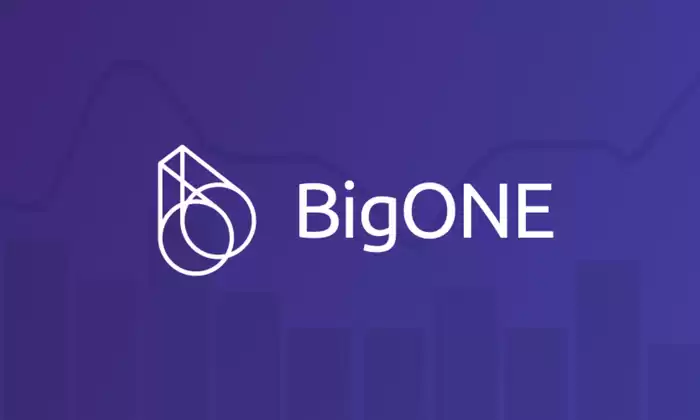-
 Bitcoin
Bitcoin $118300
-0.25% -
 Ethereum
Ethereum $4593
0.63% -
 XRP
XRP $3.099
-0.23% -
 Tether USDt
Tether USDt $1.001
0.09% -
 BNB
BNB $840.2
0.52% -
 Solana
Solana $192.6
-0.85% -
 USDC
USDC $0.0000
0.01% -
 Dogecoin
Dogecoin $0.2286
0.98% -
 TRON
TRON $0.3575
-0.50% -
 Cardano
Cardano $0.9437
1.93% -
 Hyperliquid
Hyperliquid $48.21
6.52% -
 Chainlink
Chainlink $22.33
-1.39% -
 Sui
Sui $3.826
0.89% -
 Stellar
Stellar $0.4272
0.26% -
 Bitcoin Cash
Bitcoin Cash $592.7
0.19% -
 Ethena USDe
Ethena USDe $1.001
0.06% -
 Hedera
Hedera $0.2528
0.25% -
 Avalanche
Avalanche $24.37
2.20% -
 Litecoin
Litecoin $120.5
-1.98% -
 Toncoin
Toncoin $3.493
2.53% -
 UNUS SED LEO
UNUS SED LEO $9.657
4.15% -
 Shiba Inu
Shiba Inu $0.00001293
-0.65% -
 Uniswap
Uniswap $10.93
-0.14% -
 Polkadot
Polkadot $3.981
-1.15% -
 Dai
Dai $1.000
0.03% -
 Bitget Token
Bitget Token $4.627
1.22% -
 Cronos
Cronos $0.1545
0.86% -
 Ethena
Ethena $0.7319
1.41% -
 Aave
Aave $309.9
-1.09% -
 Pepe
Pepe $0.00001108
-1.40%
Tutorial on how to play the BigONE contract
By understanding the intricacies of contract trading through BigONE's platform, traders can leverage the power of high-leverage perpetual contracts to amplify their profits or hedge their portfolio risks.
Nov 22, 2024 at 11:34 pm

Tutorial on How to Play the BigONE Contract
Introduction
BigONE, a leading cryptocurrency exchange, offers a diverse range of trading instruments, including contract trading. This guide provides a comprehensive walkthrough for beginners on how to navigate the BigONE contract platform and participate in this exciting market.
Step 1: Understanding Contract Trading
- Contract trading involves speculating on the price movements of an underlying asset without owning it directly.
- BigONE offers perpetual contracts, which have no expiration date and provide high leverage.
- Leverage allows traders to magnify their profits (and losses) with a relatively small initial investment.
Step 2: Registering for a BigONE Account
- Create an account on the BigONE exchange website or mobile app.
- Complete identity verification for enhanced security and trading privileges.
- Fund your account with supported cryptocurrencies.
Step 3: Navigating the Contract Platform
- Access the "Contracts" section from the BigONE homepage or menu.
- Choose the contract you want to trade (e.g., BTCUSDT).
- The platform displays the contract's details (price, leverage, fees).
Step 4: Placing an Order
- Decide on the contract size (number of underlying assets per contract) and order type (market or limit).
- Select whether you want to buy (long) or sell (short) the contract.
- Enter the desired leverage ratio.
- Review and confirm your order before submitting it.
Step 5: Managing Your Positions
- Once your order is executed, you will hold a position (long or short).
- The platform displays the profit/loss status of your position in real-time.
- You can close your position at any time by placing an opposite order (selling for a long position or buying for a short position).
Step 6: Understanding Contract Fees
- BigONE charges maker fees (for adding liquidity to the market) and taker fees (for taking liquidity from the market).
- Fees vary depending on the contract, trading volume, and VIP level.
- Be aware of these fees as they can impact your profitability.
Step 7: Strategies for Contract Trading
- Trend Trading: Follow market trends and trade in the direction of the dominant trend (up or down).
- Scalping: Make multiple small trades in a short period, capturing small profits from price fluctuations.
- Hedging: Use contracts to offset risk in spot or other investments.
Step 8: Risk Management
- Understand the risks associated with contract trading, including leverage and market volatility.
- Set appropriate stop-loss orders to limit potential losses.
- Monitor your positions closely and adjust your strategy as needed.
Disclaimer:info@kdj.com
The information provided is not trading advice. kdj.com does not assume any responsibility for any investments made based on the information provided in this article. Cryptocurrencies are highly volatile and it is highly recommended that you invest with caution after thorough research!
If you believe that the content used on this website infringes your copyright, please contact us immediately (info@kdj.com) and we will delete it promptly.
- Kazakhstan's Crypto Leap: Bitcoin ETF and Central Asia's Digital Finance Future
- 2025-08-13 12:45:19
- BlockDAG Presale Blazes Past $371M: Fundraising Frenzy Fuels Crypto Sensation
- 2025-08-13 13:05:21
- Meme Coins: Chasing the 2025 Surge – Which Will Moonshot?
- 2025-08-13 10:25:23
- Bitcoin's Wild Ride: Rally, Pullback, and What's Next
- 2025-08-13 10:25:23
- Bitcoin, Bitmax, and Institutional Demand: A New Era of Crypto Investment
- 2025-08-13 10:45:12
- Solana, ROAM, and Airdrops: What's the Buzz in 2025?
- 2025-08-13 11:35:13
Related knowledge

Is it possible to adjust the leverage on an open position on KuCoin?
Aug 09,2025 at 08:21pm
Understanding Leverage in KuCoin Futures TradingLeverage in KuCoin Futures allows traders to amplify their exposure to price movements by borrowing fu...

What cryptocurrencies are supported as collateral on KuCoin Futures?
Aug 11,2025 at 04:21am
Overview of KuCoin Futures and Collateral MechanismKuCoin Futures is a derivatives trading platform that allows users to trade perpetual and delivery ...

What is the difference between realized and unrealized PNL on KuCoin?
Aug 09,2025 at 01:49am
Understanding Realized and Unrealized PNL on KuCoinWhen trading on KuCoin, especially in futures and perpetual contracts, understanding the distinctio...

What different order types are available to use on KuCoin Futures?
Aug 13,2025 at 11:35am
Understanding Order Types on KuCoin FuturesKuCoin Futures offers a comprehensive range of order types to accommodate different trading strategies and ...

How does KuCoin Futures compare against Binance Futures in terms of features?
Aug 09,2025 at 03:22am
Trading Interface and User ExperienceThe trading interface is a critical component when comparing KuCoin Futures and Binance Futures, as it directly i...

How can I manage risk when applying high leverage on KuCoin?
Aug 13,2025 at 11:35am
Understanding High Leverage and Its Implications on KuCoinHigh leverage in cryptocurrency trading allows users to control larger positions with a rela...

Is it possible to adjust the leverage on an open position on KuCoin?
Aug 09,2025 at 08:21pm
Understanding Leverage in KuCoin Futures TradingLeverage in KuCoin Futures allows traders to amplify their exposure to price movements by borrowing fu...

What cryptocurrencies are supported as collateral on KuCoin Futures?
Aug 11,2025 at 04:21am
Overview of KuCoin Futures and Collateral MechanismKuCoin Futures is a derivatives trading platform that allows users to trade perpetual and delivery ...

What is the difference between realized and unrealized PNL on KuCoin?
Aug 09,2025 at 01:49am
Understanding Realized and Unrealized PNL on KuCoinWhen trading on KuCoin, especially in futures and perpetual contracts, understanding the distinctio...

What different order types are available to use on KuCoin Futures?
Aug 13,2025 at 11:35am
Understanding Order Types on KuCoin FuturesKuCoin Futures offers a comprehensive range of order types to accommodate different trading strategies and ...

How does KuCoin Futures compare against Binance Futures in terms of features?
Aug 09,2025 at 03:22am
Trading Interface and User ExperienceThe trading interface is a critical component when comparing KuCoin Futures and Binance Futures, as it directly i...

How can I manage risk when applying high leverage on KuCoin?
Aug 13,2025 at 11:35am
Understanding High Leverage and Its Implications on KuCoinHigh leverage in cryptocurrency trading allows users to control larger positions with a rela...
See all articles

























































































